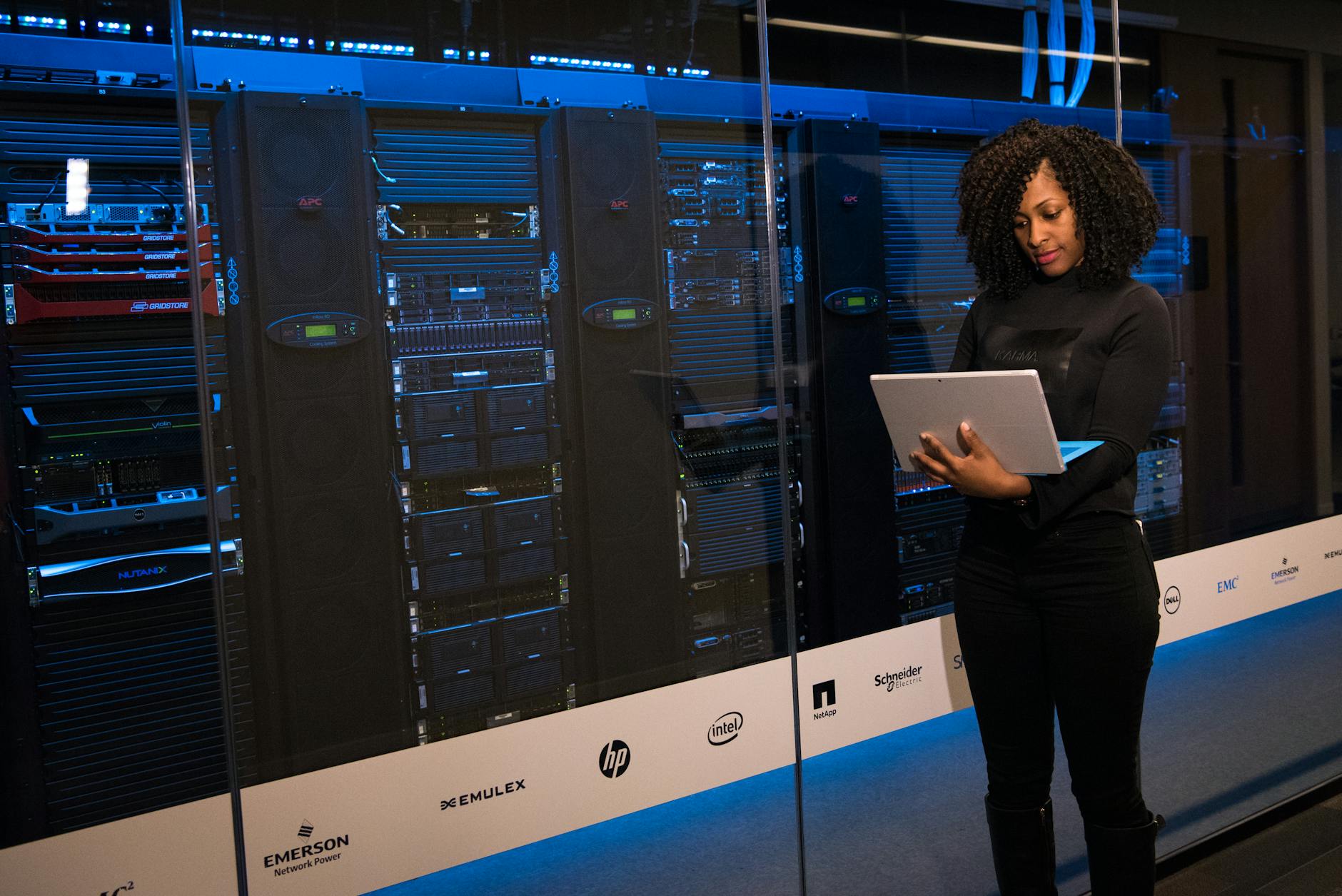We're an affiliate
This post may contain affiliate links which means I may receive a commission for purchases made through links. I will only recommend products that I have personally used!
Continuous Integration and Continuous Deployment (CI/CD) is a best practice for DevOps and agile development. It involves a culture, principles, and practices that application development teams use to deliver code changes more frequently and reliably. Continuous integration focuses on implementing small code changes frequently and checking them into a version control repository, while continuous delivery automates application delivery to selected environments. CI/CD automation helps store environment-specific parameters and makes necessary service calls to web servers, databases, and other services. It also involves continuous testing, where automated regression, performance, and other tests are executed in the CI/CD pipeline. A mature DevOps team with a robust CI/CD pipeline can also implement continuous deployment, where passing builds are deployed directly to the production environment.
Understanding CI/CD in DevOps
Continuous Integration (CI) refers to regularly integrating code changes into a shared repository. This process involves automated builds and tests to ensure that each code contribution integrates seamlessly with the existing codebase. By using CI, development teams can identify and rectify integration errors early in the development cycle, promoting collaboration and delivering high-quality software rapidly.
Continuous Deployment (CD) complements CI by automating the deployment of code changes to production or staging environments after successful CI. CD eliminates manual intervention in the deployment process, leading to faster and more frequent releases. It ensures that the application is always in a deployable state, thus reducing the time to market and enabling teams to respond promptly to market demands and bug fixes.
The Role of CI/CD in DevOps CI/CD plays a pivotal role in DevOps by fostering a culture of collaboration, automation, and continuous improvement within development and IT operations teams. It integrates automated testing, continuous integration, and continuous deployment to streamline the software delivery process. This approach increases software releases’ speed, frequency, and reliability, enhancing the overall efficiency and quality of the software development lifecycle.
 Photo by Andrea Piacquadio
Photo by Andrea Piacquadio
Getting Started with CI/CD
Evaluating Your Current Development Process
Evaluating your current development process is crucial before implementing Continuous Integration and Continuous Deployment (CI/CD). Look into your existing workflows, identify pain points, and assess areas that can be improved. This evaluation will provide a clear understanding of the challenges and strengths of your current process, setting the stage for a successful CI/CD implementation.
Setting Clear Goals for CI/CD Implementation
Setting clear and achievable goals is essential for a successful CI/CD implementation. Please determine what you aim to achieve with CI/CD, whether it’s faster delivery, improved software quality, or enhanced collaboration among development teams. These goals will guide your CI/CD strategy and help measure the effectiveness of the implementation.
Choosing the Right Tools for Your CI/CD Pipeline
Selecting the right tools for your CI/CD pipeline is critical. Consider tools that align with your existing infrastructure, support your projects’ programming languages and frameworks, and provide robust automation capabilities. Popular CI/CD tools include Jenkins, GitLab CI, and CircleCI. Choose tools that best fit your specific development and deployment requirements.
 Photo by luis gomes
Photo by luis gomes
Building Your CI/CD Pipeline
Implementing a robust Continuous Integration and Continuous Deployment (CI/CD) pipeline is crucial in DevOps. It combines various practices and tools to deliver code changes more frequently and reliably. Building your CI/CD pipeline encompasses Source Code Management Best Practices, Automated Testing Strategies, Environment Configuration and Management, and Deployment Automation Techniques.
Source Code Management Best Practices
Source Code Management is fundamental in ensuring that changes made to code are tracked, versioned, and easily reversible if necessary. Utilizing a Version Control System (VCS) like Git enables collaborative development, facilitates code review processes, and provides an auditable history of changes. By adopting branching strategies like Gitflow, teams can effectively manage feature development, hotfixes, and release cycles.
Automated Testing Strategies
Automated Testing is a cornerstone of CI/CD pipelines. It includes unit, integration, and end-to-end tests, executed automatically upon code commits. Implementing a robust test suite ensures early detection of defects and regressions, leading to higher code quality and faster feedback loops for developers. Leveraging tools like Selenium for browser automation and JUnit for unit testing can enhance test coverage and effectiveness.
Environment Configuration and Management
Effective environment configuration and management are essential for maintaining consistency across development, testing, staging, and production environments. Infrastructure as Code (IaC) tools like Terraform and Ansible streamline infrastructure provisioning and configuring infrastructure, enabling reproducible environments. Containerization with Docker and orchestration with Kubernetes further enhance portability and scalability across different environments.
Deployment Automation Techniques
Streamlining deployment processes through automation is critical for achieving rapid and reliable releases. Continuous Delivery practices promote the automation of deployment pipelines, including build processes, artifact creation, and release orchestration. Implementing Blue-Green deployments or Canary releases with tools like Jenkins or CircleCI enables seamless rollouts while minimizing downtime and risks associated with production deployments.
 Photo by Pixabay
Photo by Pixabay
Successfully executing these CI/CD pipeline elements fosters a culture of continuous improvement, collaboration, and accelerated delivery within the DevOps lifecycle.
Ensuring Quality and Security
Quality and security are paramount in the DevOps pipeline, ensuring code reliability and safeguarding against vulnerabilities. Integrating code quality checks, incorporating security scans, and managing dependencies and artifacts are essential to achieving these goals.
Integrating Code Quality Checks
Implementing automated code quality checks using tools like SonarQube or ESLint can help maintain high code standards and identify issues early in the development cycle. These checks ensure adherence to coding best practices, enhancing the overall quality of the codebase.
Incorporating Security Scans
Automated security scans using tools like Veracode or Checkmarx can help identify and address potential security vulnerabilities within the code. These scans provide insights into potential threats and enable proactive measures to mitigate security risks throughout development
Managing Dependencies and Artifacts
Effectively managing dependencies and artifacts is crucial for maintaining a secure and efficient DevOps pipeline. Tools like JFrog Artifactory or Nexus Repository Manager can help manage dependencies, ensuring version control and secure artifact storage.
 Photo by PhotoMIX Company
Photo by PhotoMIX Company
Streamlining the CI/CD Process
In the context of DevOps, streamlining the continuous integration and continuous deployment (CI/CD) process involves optimizing build times, effective monitoring and logging, and handling rollbacks and hotfixes. Implementing these aspects efficiently can significantly enhance the software development and delivery pipeline.
Optimizing Build Times
Optimizing build times is crucial for a smooth CI/CD process. By employing techniques such as parallelizing tasks, caching dependencies, and utilizing efficient build tools, development teams can reduce the time taken for each build cycle. This results in faster feedback loops and quicker identification of issues, ultimately contributing to accelerated delivery timelines and improved developer productivity.
Effective Monitoring and Logging
Effective monitoring and logging are essential to a robust CI/CD implementation. By leveraging comprehensive monitoring tools and establishing proactive logging practices, development teams can gain insights into the performance of their applications throughout the deployment pipeline. This enables the prompt identification of bottlenecks, errors, and anomalies, facilitating preemptive measures to ensure the stability and reliability of the software under continuous deployment.
 Photo by Christina Morillo
Photo by Christina Morillo
Handling Rollbacks and Hotfixes
A well-defined strategy for handling rollbacks and hotfixes is essential for maintaining the stability of the production environment. By automating the rollback process and establishing clear protocols for hotfix deployments, development teams can mitigate the impact of potential issues in production. This not only bolsters the resilience of the CI/CD pipeline but also instills confidence in the continuous delivery of software updates.
These critical aspects of streamlining the CI/CD process contribute to the efficient orchestration of software delivery, ensuring that the DevOps workflow aligns with the principles of agility, reliability, and continuous improvement.
Overcoming Common CI/CD Challenges
Continuous Integration and Continuous Deployment (CI/CD) implementation in DevOps often encounter various challenges. Addressing these challenges is crucial to ensure the smooth flow of software development and delivery. Let’s delve into the common challenges and their corresponding solutions.
Addressing Collaboration Issues Among Teams
Team collaboration is essential in achieving successful CI/CD implementation. However, differing objectives, communication gaps, and conflicting priorities can hinder effective collaboration. Organizations should emphasize transparent communication channels, promote cross-functional teamwork, and implement agile methodologies to mitigate this. Collaboration tools like Slack, Microsoft Teams, or Jira can also enhance communication and coordination, ensuring everyone is aligned toward the common goal.
 Photo by Kampus Production
Photo by Kampus Production
Dealing with Complex Deployments
Complex deployments pose a significant challenge in CI/CD implementation, often leading to bottlenecks and delays in the release of software updates. Organizations can adopt infrastructure as code (IaC) practices to address this challenge, implement containerization using Docker or Kubernetes, and utilize orchestration tools like Ansible or Terraform. These strategies streamline deployment processes, enhance scalability, and minimize deployment complexities, ensuring efficient and reliable software delivery.
Scaling CI/CD for Large Organizations
Scaling CI/CD practices to cater to extensive software development projects can be daunting in large organizations. Organizations should invest in scalable infrastructure, leverage cloud-based CI/CD platforms such as AWS CodePipeline or Azure DevOps, and implement automated testing and deployment pipelines to address this. Additionally, establishing standardized CI/CD practices across departments and providing comprehensive training to teams can facilitate the seamless scaling of CI/CD within large organizations.
CI/CD Best Practices
Regularly Updating and Maintaining Your CI/CD Pipeline
Maintaining an efficient CI/CD pipeline requires regular updates and maintenance to ensure seamless workflow. By routinely updating the pipeline, you can incorporate the latest tools and technologies, address security vulnerabilities, and optimize performance. This practice fosters a culture of continuous improvement, enabling the team to stay ahead in the dynamic DevOps landscape.
Educating and Training Your Team
Educating and training your team on CI/CD best practices is crucial for successful implementation. Providing comprehensive training on tools, automation, and best practices cultivates a skilled workforce capable of maximizing the benefits of CI/CD. It empowers team members to contribute effectively to the CI/CD pipeline, fostering a culture of collaboration and innovation.
Measuring Success and Making Improvements
Measuring the success of your CI/CD implementation involves tracking key performance indicators (KPIs) such as deployment frequency, lead time, and change failure rate. By analyzing these metrics, you can identify areas for improvement and make informed decisions to optimize the pipeline. Continuous improvement is fundamental to the DevOps philosophy, and a data-driven approach ensures that your CI/CD pipeline evolves to meet the changing needs of your organization.
 Photo by Kampus Production
Photo by Kampus Production
These best practices form the cornerstone of a robust CI/CD implementation, driving efficiency, collaboration, and innovation within your DevOps environment.
Conclusion
Implementing Continuous Integration and Continuous Deployment (CI/CD) in DevOps is crucial for faster, more reliable code delivery. By automating the integration and delivery processes, software development teams can focus on meeting business requirements while ensuring high-quality and secure software. Embracing CI/CD practices, using CI/CD tools and continuous testing, enables teams to streamline their development pipeline and achieve efficient deployment to production environments.

